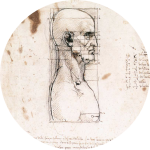 Diffuse low-grade gliomas
Diffuse low-grade gliomas
LEGEND OF THE FIGURES
Figure 1: Natural history of DLGGs
A: Successive MRI showing an unavoidable growth – volume is 4 times higher three years later in an asymptomatic patient that is followed up.
B: Malignant transformation with the appearance of contrast enhancement 18 months after the onset of the first seizure in a patient that hasn’t received an oncologic treatment.
Figure 2: Resection of a DLGG infiltrating the left opercular region (’Broca’s area’) with invasion of the insula.
A: FLAIR MRI sequences, axial (left) and coronal T2 (right) showing a typical image of a left operculo-insular DLGG in a right-handed 35 year old patient who experienced an inaugural seizure. Neurological examination was normal preoperatively, but the neuropsychological assessment objectified disorders verbal working memory.
B: Intraoperative photographs before (left) and after (right) surgical resection performed according to cortical and subcortical intraoperative functional boundaries in an awake patient. The letters symbolize the tumor boundaries identified through an intraoperative ultrasound system. The numbers correspond to ’eloquent’ areas as follows:
![]() Cortical areas 1 and 3 (speech arrest at the ventral premotor cortex); 2: primary motor area of the face; 4: anomic area (posterior superior temporal gyrus);
Cortical areas 1 and 3 (speech arrest at the ventral premotor cortex); 2: primary motor area of the face; 4: anomic area (posterior superior temporal gyrus);
![]() Subcortical areas: 48: anarthria generated by stimulation of the anterior portion of the lateral upper longitudinal tract (ending at the ventral premotor cortex); 49, 46, 47: semantic paraphasias induced by stimulation of the inferior fronto-occipital tract (courses in the temporal stem and frontal lobe, terminating at the dorsolateral prefrontal cortex); 50: ’Negative motor’ network resulting in interruption of movement during stimulation and projecting into the anterior limb of the internal capsule; 12: perseverations generated by stimulation of the head of the caudate nucleus.
Subcortical areas: 48: anarthria generated by stimulation of the anterior portion of the lateral upper longitudinal tract (ending at the ventral premotor cortex); 49, 46, 47: semantic paraphasias induced by stimulation of the inferior fronto-occipital tract (courses in the temporal stem and frontal lobe, terminating at the dorsolateral prefrontal cortex); 50: ’Negative motor’ network resulting in interruption of movement during stimulation and projecting into the anterior limb of the internal capsule; 12: perseverations generated by stimulation of the head of the caudate nucleus.
C: FLAIR sequences: axial (left) and coronal T2 (right) on early postoperative MRI (done six hours after surgery), demonstrating complete resection. The diagnosis of WHO grade II glioma was confirmed histologically. After a transient worsening in speech requiring speech therapy a few weeks at home, the patient resumed a normal social and professional life - with improved neuropsychological assessment performed 3 months after surgery in comparison to the preoperative assessment. No adjuvant cancer treatment was given, but clinical follow up and regular MRI was introduced.
Figure 3: Organigramme for the management of DLGG (modified from 21)
 Encyclopædia Neurochirurgica
Encyclopædia Neurochirurgica

